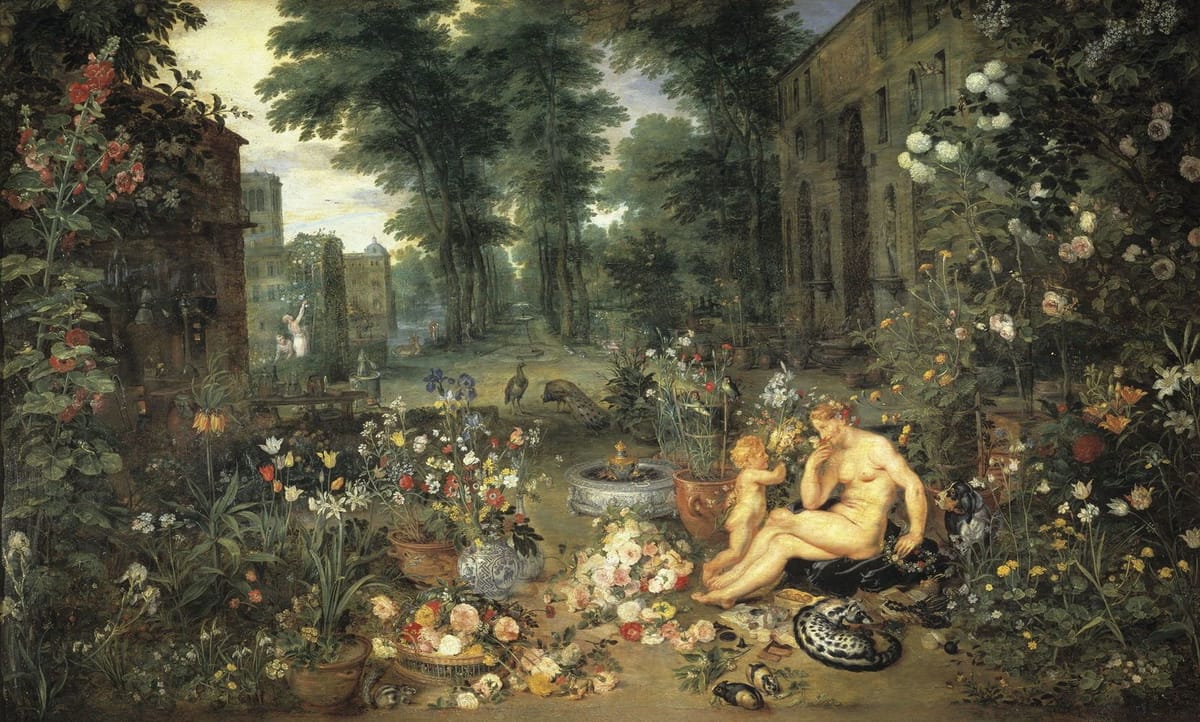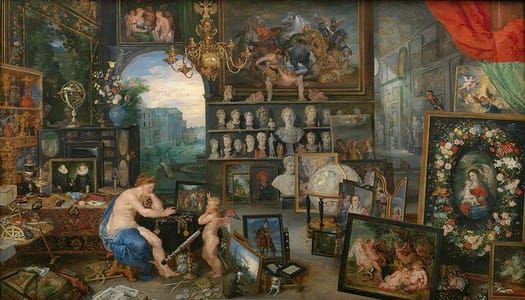

Allegory of the Sense of Smell
Jan Bruegel The Elder And Peter Paul Rubens
Painting non-visual experiences may seem like attempting the impossible, but many great artists have either been commissioned or felt compelled to do so. There are many well-known themes which are primarily non-visual; this article looks and sniffs at one of the toughest – smell.
The best-known and still-startling example of the classical approach to painting smell is Jan Brueghel the Elder and Peter Paul Rubens’ magnificent Allegory of the Sense of Smell (c 1617-18). Although Rubens’ figures are a delight, it is Brueghel’s wealth of detail which makes this, and the whole series of five allegories of the senses, so compelling.
This set the benchmark for the symbolic objects which could be included to allude to the sense of smell: flowers, of course, with at least a couple of dozen different fragrant species shown, vanilla pods in the foreground being eaten by guinea pigs, a squirrel, the ill-scented civet with its distinctive black and white markings, and a hound (presumably an antecedent of the bloodhound) for its famed sense of smell.
Brueghel also includes vials of scent, and the apparatus for distilling essential oils and perfumes in the left middle distance.
brueghelallegorysightsmell
(https://eclecticlight.co/2017/03/18/painting-the-impossible-smell/)
Uploaded on by Suzan Hamer
Arthur
Wait what?

